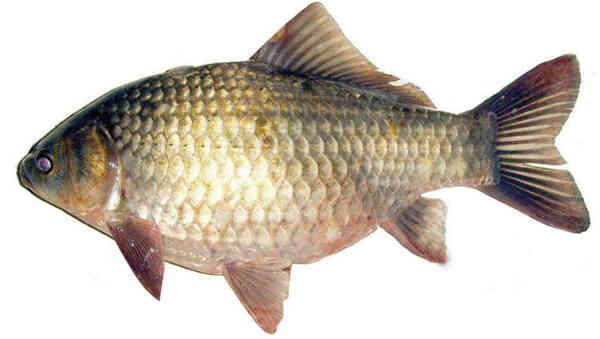Crucian carp is one of the typical bottom fishes with strong adaptability. It can survive in water with a pH value of 4 or pH value of 9, and can even live in spring water, sewage and industrial wastewater containing minerals. In addition, it can withstand severe cold (such as -10℃ to -15℃), and has a strong tolerance in hot summer climates and low oxygen environments. Crucian carp has a strong adaptability to low oxygen. It can grow normally when the dissolved oxygen content is above 2 mg/L. Its breathing is inhibited when it is as low as 1 mg/L, and the oxygen threshold for death by suffocation is 0.1 mg/L.

Crucian carp is an omnivorous fish with a wide range of diet. Although its food composition varies slightly depending on the region and season, it mainly feeds on rotifers, cladocerans, and trichopterans among zooplankton, and also eats chironomid larvae, shrimps, small mollusks, algae, plant debris, young shoots or tender leaves of higher aquatic plants, and humus in silt. Under artificial breeding conditions, it eats various commercial feeds (soybean cake, rapeseed cake, peanut cake, cottonseed cake, bran, corn flour, rice bran, bean dregs, dregs, etc.) and various livestock and poultry feces.
Although crucian carp has strong vitality, omnivorous nature and tender and delicious meat, it matures prematurely (female fish are generally 6-8 cm, weigh 8-10 grams, and about 82% of individuals reach sexual maturity; male fish generally begin to mature at 5-6 cm and weigh 6-8 grams, and about 99% of individuals reach sexual maturity when they are over 8 cm), consuming a large amount of nutrients for gonadal development, which seriously affects its growth. Under natural conditions, the average weight of female crucian carp in Liangzi Lake, Hubei Province, China, is 45 grams for one-year-old fish, 96 grams for two-year-old fish, 185 grams for three-year-old fish, 327 grams for four-year-old fish, about 582 grams for five-year-old fish, 681 grams for six-year-old fish, and 803 grams for seven-year-old fish. In the Yangtze River Basin of China, the growth of artificially bred crucian carp is only about 100 grams, and the weight of two-year-old crucian carp is only about 200-800 grams. Because crucian carp grows slowly, it has not been truly used as an object of artificial breeding for a long time. The largest individual crucian carp recorded in China weighed 1.25 kilograms, but after the crucian carp was introduced from Australia, the largest individual weighed more than 5 kilograms.
Edible: Crucian carp is one of the important edible fish in China. The meat is tender, sweet and has high nutritional value. Every 100 grams of meat contains 18 grams of protein, 4.4 grams of fat, 84 milligrams of calcium, 200 milligrams of phosphorus, 3.2 milligrams of iron, 0.01 milligrams of vitamin B1, 0.03 milligrams of vitamin B2, and 1.9 milligrams of niacin. In autumn and winter, crucian meat is fat and has many seeds, and the taste is particularly delicious.
Medicinal use: Chinese medicine believes that it is sweet and warm in nature, can promote diuresis and reduce swelling, invigorate qi and strengthen the spleen, detoxify, and promote lactation. It has the effects of harmonizing the middle and replenishing deficiency, removing dampness and promoting diuresis, warming the stomach and eating, and replenishing the middle and invigorating qi. Clinical practice has proved that crucian meat can prevent and treat arteriosclerosis, hypertension and coronary heart disease, and has the effect of lowering cholesterol. "Compendium of Materia Medica" has a very high evaluation of crucian carp: crucian carp can be used to season the intestines and has no effect on diseases. It is the only fish that can be eaten regularly. Eating crucian carp regularly can not only keep fit, but also reduce obesity, help lower blood pressure and blood lipids, and prolong life. Eating crucian carp for pregnant women can not only increase nutrition, but also effectively promote lactation.